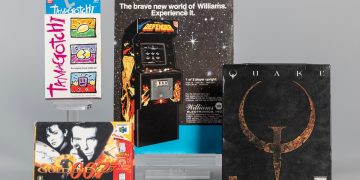OneXPlayer has dropped an exciting teaser on YouTube for their latest handheld gaming marvel, the Onexfly F1 Pro. This isn’t just any upgrade; it’s powered by AMD’s potent Ryzen AI 9 HX 370 processor, part of the cutting-edge Ryzen AI 300 series, specifically known as Strix Point. Featuring a handy 7-inch display, the Onexfly F1 Pro impressively demonstrated its capabilities by running Black Myth: Wukong, delivering a smooth 50 to 60 FPS.
Dive into the specs and you’ll find a stunning 7-inch OLED display flaunting HDR support and an impressive 144 Hz refresh rate. Plus, it’s lightweight at 598 grams, and comes equipped with Harman Kardon speakers for an audio punch. The powerhouse under the hood? The Ryzen AI 9 HX 370 CPU, complete with four Zen 5 cores, another eight Zen 5c cores, and the cutting-edge Radeon 890M iGPU featuring 16 CUs, all built on RDNA 3.5 architecture. Those specs allow the Onexfly F1 Pro to give competitors like the Steam Deck OLED, ROG Ally X, and Lenovo Legion Go a serious run for their money.
In a detailed showcase, OneXPlayer highlighted the device’s performance running Black Myth: Wukong, set at 1080p resolution on low-quality settings, with 65% upscaling which translates to an internal rendering resolution of 1248 x 702. The handheld achieved an average frame rate of 58 FPS during this test, while maintaining power consumption at just 15W.
The Onexfly F1 Pro marks a significant leap for OneXPlayer as it becomes their debut device to blend an OLED display with AMD’s newest Zen 5-based mobile processors. Previously, their lineup relied on either older-gen Intel or AMD CPUs, paired with traditional non-OLED displays. Entering the market as one of the earliest Zen 5-powered handhelds, it currently faces competition only from the GPT Pocket 4, which also boasts a Ryzen AI HX 370 chip.
What sets the F1 Pro apart from the Pocket 4 is its design; the F1 Pro is crafted as a dedicated handheld with familiar gaming grips and controls. In contrast, the Pocket 4 serves as a versatile 2-in-1 device featuring a keyboard and a screen that can rotate 180 degrees.
OneXPlayer’s impressive benchmark demonstrates that the AI 9 HX 370 processor is a perfect fit for handheld gaming, comfortably handling demanding AAA games even with a balanced 15W TDP to conserve battery. As we wait for AMD’s next-gen Z-series CPUs, optimized specifically for handhelds, developers are understandably leaning on their laptop-focused Ryzen AI 300 series to power next-level mobile gaming experiences.










![[PS5] Review of Lost Records: Bloom and Rage – Tape 2 [PS5] Review of Lost Records: Bloom and Rage – Tape 2](https://www.intergamerz.com/wp-content/uploads/2025/04/Complimentary-Game-Lost-Records-Bloom-and-Rage-PS5-Giveaway-North-360x180.jpg)






















![[Industry Direct] PHI Studio & Agog Invite Applications for a Four-Week Residency for Immersive Artists [Industry Direct] PHI Studio & Agog Invite Applications for a Four-Week Residency for Immersive Artists](https://www.intergamerz.com/wp-content/uploads/2025/05/Industry-Direct-PHI-Studio-Agog-Invite-Applications-for-a-360x180.jpg)












